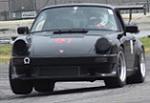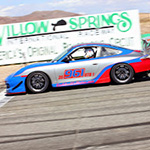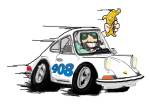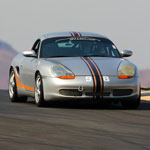May PDS
17 posts
• Page 1 of 2 • 1, 2
Re: May PDS
Applications must be postmarked April 27th or later. Any applications arriving/postmarked prior to April 27th will be returned un-opened.
We're working on getting a link to the flyer/ad/application, but with the website going helter-skelter I'm not sure that will happen in a timely manner. We'll keep you posted.
We're working on getting a link to the flyer/ad/application, but with the website going helter-skelter I'm not sure that will happen in a timely manner. We'll keep you posted.
Dan Chambers
"It's just a "well prepared" street car ... or a very, very well-mannered track car."
1983 SC #91 3.6L, "Black Pearl" Livery
1987 944 (gone but not forgotten)
"It's just a "well prepared" street car ... or a very, very well-mannered track car."

1983 SC #91 3.6L, "Black Pearl" Livery
1987 944 (gone but not forgotten)
-

Dan Chambers - Pro Racer
- Posts: 1761
- Joined: Wed Jun 30, 2004 3:57 pm
- Location: San Diego
Re: May PDS
Last edited by MR LIPP on Sat Apr 25, 2009 9:02 am, edited 1 time in total.

"Illegitimi caudex non carborundum"
-

MR LIPP - Club Racer
- Posts: 806
- Joined: Mon Mar 03, 2008 12:55 pm
- Location: Lost in Cyberspace
Re: May PDS
Presumably there will be an instructor disorientation meeting some time or other before the school?
David Malmberg
2015-2016 AX CDI team
PCA National DE Instructor
member, Texas Mile 200 MPH club
"A finish is a win! Moderation is the key! More whine!"
2015-2016 AX CDI team
PCA National DE Instructor
member, Texas Mile 200 MPH club
"A finish is a win! Moderation is the key! More whine!"
-

LUCKY DAVE - Club Racer
- Posts: 582
- Joined: Mon Apr 30, 2007 7:49 pm
- Location: Leucadia ca
Re: May PDS
The Performance Driving School will be May 22 - 24, 2009. Applications will need to be mailed in no earlier than April 27, 2009. We are working on getting a link to the application form, but we've been having problems with our website due to the crash of the PCA server. If you are interested, please email mrondeau@cox.net or cdi@pcasdr.org and we will be happy to email an application to you.
Instructors: Please make a note of the date. We will be sending an email out to you shortly regarding the school as well as setting up the Instructors meeting which will be shortly before the school. If you have any questions, please contact Dan Chambers, Chuck Sharp or Mark Rondeau at the email addresses above.
Thanks!
Instructors: Please make a note of the date. We will be sending an email out to you shortly regarding the school as well as setting up the Instructors meeting which will be shortly before the school. If you have any questions, please contact Dan Chambers, Chuck Sharp or Mark Rondeau at the email addresses above.
Thanks!
Mark Rondeau - Retired from club duties
1979 911SC #1 -Modified for track use.
2021 Toyota Tundra 4X4
1979 911SC #1 -Modified for track use.
2021 Toyota Tundra 4X4
-

mrondeau - Pro Racer
- Posts: 1256
- Joined: Tue Apr 03, 2007 9:28 pm
- Location: San Diego
Re: May PDS
Applications can be mailed in starting today!! This event sells out quickly, so get your applications in early. Any questions, contact cdi@pcasdr.org.
Mark Rondeau - Retired from club duties
1979 911SC #1 -Modified for track use.
2021 Toyota Tundra 4X4
1979 911SC #1 -Modified for track use.
2021 Toyota Tundra 4X4
-

mrondeau - Pro Racer
- Posts: 1256
- Joined: Tue Apr 03, 2007 9:28 pm
- Location: San Diego
Re: May PDS
I would NOT recommend getting new tires for the school. The watered pavement exercises work better with older tires than brand new ones. IMHO.

"Illegitimi caudex non carborundum"
-

MR LIPP - Club Racer
- Posts: 806
- Joined: Mon Mar 03, 2008 12:55 pm
- Location: Lost in Cyberspace
Re: May PDS
New front tires are probably ok, just not new rears. Also, lots of air in the rear tires, 4+ over recommended cold can help, but remember to match things back after the school. Cars are designed with too much understeer, and the school is based on using oversteer which can be very hard to find in newer cars at sane speeds.
Of course, corded tires are completely unsafe, so new tires are better than really old tires.
Of course, corded tires are completely unsafe, so new tires are better than really old tires.
Jad Duncan
997 S Cab - Sold
996 "not a cup car" Sold
Tesla Model S
Porsche Taycan
https://www.goldfishconsulting.com/
997 S Cab - Sold
996 "not a cup car" Sold
Tesla Model S
Porsche Taycan
https://www.goldfishconsulting.com/
-

Jad - Pro Racer
- Posts: 1788
- Joined: Wed Jun 30, 2004 11:03 am
- Location: Del Mar
Re: May PDS
Jad,
You are kidding, right?
I thought corded tires were a pre-requisite!
For everyone else, no corded tires. I have the exclusive!
You are kidding, right?
I thought corded tires were a pre-requisite!
For everyone else, no corded tires. I have the exclusive!

Chuck Sharp
1988 911 Carrera 3.2 Targa C.E.
1988 944 Turbo S
1986 944 Spec
and Several X Cars
1988 911 Carrera 3.2 Targa C.E.
1988 944 Turbo S
1986 944 Spec
and Several X Cars
-

ChuckS - Time Trialer
- Posts: 471
- Joined: Tue Apr 03, 2007 4:03 pm
- Location: Rancho Bernardo
Re: May PDS
Remember Chuck, these are students, not accomplished racers like yourself that can use the metal cord to wrap around pebbles in the track for added traction and less weight 

Jad Duncan
997 S Cab - Sold
996 "not a cup car" Sold
Tesla Model S
Porsche Taycan
https://www.goldfishconsulting.com/
997 S Cab - Sold
996 "not a cup car" Sold
Tesla Model S
Porsche Taycan
https://www.goldfishconsulting.com/
-

Jad - Pro Racer
- Posts: 1788
- Joined: Wed Jun 30, 2004 11:03 am
- Location: Del Mar
Re: May PDS
I'm a little confused, why over inflate the rears versus the fronts to induce oversteer? Am I thinking about this too much that I'm confusing myself?
Victor
04 GT3 3/4 Cup
98 M3 Race car
MB C350 DD
04 GT3 3/4 Cup
98 M3 Race car
MB C350 DD
-

va122 - Autocrosser
- Posts: 52
- Joined: Thu Jan 25, 2007 4:13 pm
Re: May PDS
va122 wrote:I'm a little confused, why over inflate the rears versus the fronts to induce oversteer? Am I thinking about this too much that I'm confusing myself?
Over-inflating the rear tires will reduce traction on that end of the car and contribute to oversteering, with most street tires. Unfortunately, some of the newer cars with stock alignments have so much understeer built in at the factory that they are very difficult to "pitch and catch", even on low-grip, wet pavement. Even with all electronic traction control aids turned off, I have had to use left-foot braking as well as an abrupt lift of the throttle to induce enough weight shift to break the rear end loose on a stock 996 before when performing that exercise. Without some performance alignment changes, it is very difficult to get a newer Porsche to be "tail-happy," especially the C4S model. Of course with enough power, you can stomp on the throttle to spin the rear tires and break them loose, but that is more difficult to control in a tight turn and not the point of the exercise.
For safety's sake, over time the factory has eliminated the easy "throttle-steering" handling that was the hallmark of the early 911s. The newer, rear multi-link suspensions have much better toe and camber control in droop and compression than the earlier semi-trailing arm suspensions, which induced toe-out in a cornering situation when the throttle was lifted, resulting in instant (but very controllable) oversteer, when combined with the rear weight bias of the car. This had something (everything) to do with product liability. The initial solution was introduced on the 928 as the "Weissach axle", which added a toe-link to the trailing arm to control toe-out, and continued with the modern multi-link suspensions.
TT
Tom Tweed -- #908
SDR Tech Inspection Chair 2005-06
SDR Forum Admin 2010-present
Windblown Witness Assistant Editor 2012-present
Driving Porsches since 1964
SDR Tech Inspection Chair 2005-06
SDR Forum Admin 2010-present
Windblown Witness Assistant Editor 2012-present
Driving Porsches since 1964
-

ttweed - Admin
- Posts: 1851
- Joined: Fri Jul 02, 2004 7:13 am
- Location: La Jolla, CA
Re: May PDS
This may be moot if the school is already full but:
1. Shouldn't there be a link to the PDF application on the calendar, rather than just a link to the Q on the San Diego City website?
2. Shouldn't the PDF be a form that can be filled in online and then printed for maximal legibility?
Greg Phillips
Greg Phillips
SDR Past-President @ 2014 Instructor of the Year
1982 911SC coupe, 2001 & 2002 Boxster S (the track cars)
1993 968 M030 & 2005 Boxster (Pat's car)
2019 Hertz Z06 Corvette
SDR Past-President @ 2014 Instructor of the Year
1982 911SC coupe, 2001 & 2002 Boxster S (the track cars)
1993 968 M030 & 2005 Boxster (Pat's car)
2019 Hertz Z06 Corvette
-

Greg Phillips - Pro Racer
- Posts: 1591
- Joined: Wed Jun 30, 2004 11:41 am
- Location: Coronado
Re: May PDS
Greg Phillips wrote:
This may be moot if the school is already full but:
1. Shouldn't there be a link to the PDF application on the calendar, rather than just a link to the Q on the San Diego City website?
2. Shouldn't the PDF be a form that can be filled in online and then printed for maximal legibility?
Greg Phillips
Great points, Greg. We actually were trying to get a link to the flyer/application on the Main / Home web-page of pcasdr's website. With everyone very busy, and the website's having issues, it's been a less-than important issue for the web team to worry about our PDS issues. We're still trying to get Mark Rondeau liked up with the CDI's email link (he's still "out of the email loop").
In the mean time, the links that we do have will need to suffice. I'm sure we'll have everything dialed in very soon.
DC
Dan Chambers
"It's just a "well prepared" street car ... or a very, very well-mannered track car."
1983 SC #91 3.6L, "Black Pearl" Livery
1987 944 (gone but not forgotten)
"It's just a "well prepared" street car ... or a very, very well-mannered track car."

1983 SC #91 3.6L, "Black Pearl" Livery
1987 944 (gone but not forgotten)
-

Dan Chambers - Pro Racer
- Posts: 1761
- Joined: Wed Jun 30, 2004 3:57 pm
- Location: San Diego
17 posts
• Page 1 of 2 • 1, 2
Who is online
Users browsing this forum: No registered users and 298 guests
